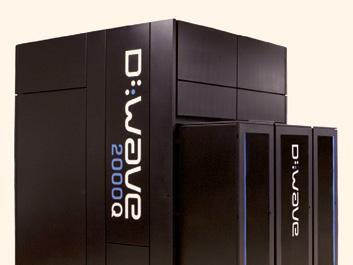
3 minute read
Corona noise
Quantum technology Free quantum computing for corona responders
Is quantum technology mature enough to contribute to helping out with the COVID-19 crisis? D-Wave Systems thinks it is. e Canadian company has opened up its Leap 2 quantum computing cloud service free of charge to work on a response to the pandemic. D-Wave thinks that its particular avor of quantum computing, which couples simulated qubits to actual qubits, could support scienti c endeavors such as the development of vaccines or treatments, as well as help out with epidemiological modeling studies. Applications that D-Wave’s technology is already being used for, such as logistics, are relevant too. One caveat is that many interested parties have zero experi
Advertisement
ence with quantum computing. at’s why D-Wave has graciously reached out to customers and partners, asking them if they’re willing to help out as well. PvG

Education Dyson spoils home-bound young engineers
Many parents will wonder what they should let their children do on yet another schoolless day. e James Dyson Foundation is here to help. If you’re wondering why that name seems familiar – yes, it was created by a famous vacuum cleaner designer. On its website, the foundation has released a series of do-try-at-home experiments specifically for curious, inventive children. eir 44 challenge cards conists of construction experiments and physics tests, all of which
Credit: James Dyson Foundation

can be carried out using ordinary house and garden equipment like strings, spaghetti and PET bottles. e experiments are designed for children from 7 years of age and up. e cards contain technical instructions and a scienti c explanation on each task. Judging from comments, parents and older siblings are enjoying the experiments as well. So why not indulge in some educational activities with your children? Who knows, you might subtly seduce them into becoming an engineer. JV
3D printing Corona crisis, a boon for additive manufacturing?
e foundry industry – the one that produces metal castings – is su ering from the decline in production in the automotive industry. However, as demand for metal components is waning, it appears the additive manufacturing industry could get a boost. By using additive manufacturing, smaller quantities can be produced economically. It also has the advantage of exibility in shape and material usage, as well as a fast manufacturing process. It’s especially useful for lling gaps in the supply chain – a problem many manufacturers face nowadays. On the ip side, additive manufacturing requires investments in equipment such as printers and materials, which may slow down the spread of the technology. Given the current economic and health crisis, it’s not likely that companies would be too keen on making such large investments. at being said, the current global quandary is only highlighting the industry’s dependence on international trade. Fortunately, additive manufacturing could enable companies to remove bottlenecks and react exibly to volatile requirements. JV
Semicon Corona’s silver lining for the chip industry
With more than a third of the global population under some level of a stay-at-home order, due to the coronavirus, businesses and markets are getting thrashed. But after several weeks with millions of people working from the safety of their homes, it seems even this cloud has a silver lining. According to a report by Reuters, the chip market is seeing a spike in demand – particularly as the need for laptops and network supplies is surging. While many companies are sounding the alarm on forecasted earnings, others seem to be faring well. Memory chip juggernaut Samsung recently reported a jump of 20 percent in semiconductor exports. Additionally, as the number of connected users
continues to climb, data centers and cloud service providers are driving the demand for server chips. Recently, UBS forecasted that DRAM chip prices could go up 10 percent from Q1-Q2, led by a 20 percent jump in server chips, with further demand of DRAM expected to rise as much as 31 percent in both 2020 and 2021. CA











